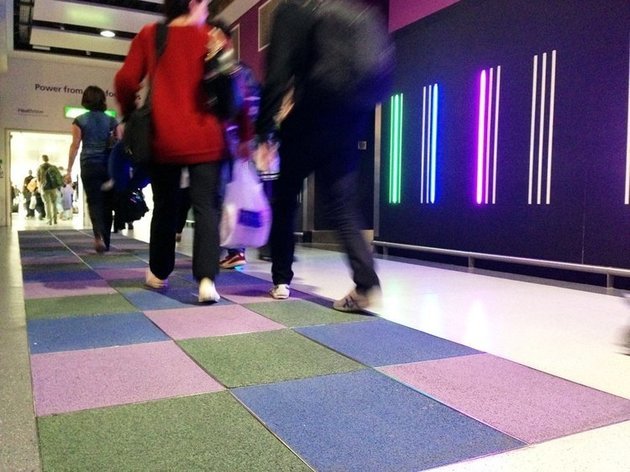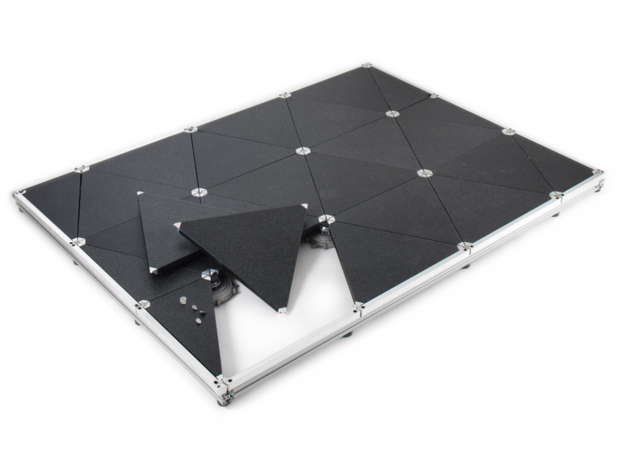Huffington Post relays that the innovative tiles have been constructed to harness as much kinetic as possible. Some are triangular-shaped and have a generator at each corner. This ensures that the energy a person's footstep generates is maximized - regardless of where one steps.
The more one walks on the tiles, the more energy they generate. Even Al Gore has endorsed the tiles which generate about 5 watts of continuous power.
Comment: Well if Al Gore likes it you know it's a winner!
Laurence Kemball-Cook, the founder of Pavegan, told Radio France Internationale that the tiles have an important function, as they can help light up locations that are poor or rural and cannot afford to invest in social functions. He said:
Of course, he's quick to admit that the technology has its limitations:"We found a community that had no light, has no way at night time for people to socialise or play sport. We're creating a real legacy project here to really change the way energy used and viewed in Africa."
It seems the future is green. Even multinational oil company Shell has endorsed the project. Regarding that achievement, Kimball told the press:"We're not trying to make Pavegen the sole energy source to power every city in the future. We believe it's going to be one of the key constituents of the energy mix of the future."
David Horsely informed Wired that the invention doesn't have much application to large projects, as one might only achieve 100 watts from a square meter of solar paneling. However, "for small wearable electronics like watches, or maybe even your phone, this kind of energy harvesting makes sense," he says."We are changing the way Shell's perceived. I think that's really important that young, disruptive technology companies like Pavegen from London can work with big brands to make real social impact projects."
As the technology is improved upon, it is likely that the tiles will eventually generate more energy. Undoubtedly, this will help countries reduce their carbon footprint and transition to running entirely on renewable energy sources, which Greenpeace predicts could be possible by the year 2050.





All of this is fine and dandy and makes great eye candy, but when the PTB pulls the rug out on the economy, initiates martial law to bring our police state out of the closet (even if it seems out already), this dream won't last any longer than any other 'positive' innovation to help people. Those controlling the system simply won't allow it to occur.... 'over their dead bodies', and aren't these inventor's and innovators mostly 'peaceful' types? See the disconnect? Nice wishful thinking though, enjoy the dream while it last.